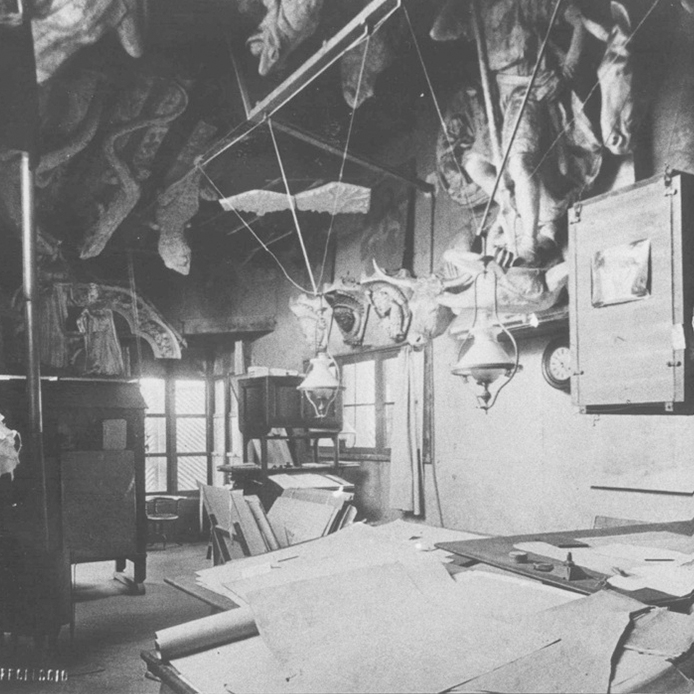Gaudi obra - Antoni Gaudí - Sagrada Família
ANTONI GAUDÍ
Reus, 25 June 1852 – Barcelona, 10 June 1926
Ahead of his time, unique. A man of faith, observer of nature and genius architect, Antoni Gaudí has become a universal figure in modern architecture. His contribution to this discipline broke all the established rules. With never-before-seen building and structural systems, he created his own unique, unprecedented methodology and a style suffused with symbolism with the utmost care in every detail, showing his love of artisan trades.
On 14 April 2025, Antoni Gaudí was proclaimed Venerable by Pope Francis after accepting the votes in favour from historical advisers, theologians and the cardinals and bishops in the Vatican’s Dicastery for the Causes of Saints.
Reus, 25 June 1852 – Barcelona, 10 June 1926
Ahead of his time, unique. A man of faith, observer of nature and genius architect, Antoni Gaudí has become a universal figure in modern architecture.
On 14 April 2025, Antoni Gaudí was proclaimed Venerable by Pope Francis after accepting the votes in favour from historical advisers, theologians and the cardinals and bishops in the Vatican’s Dicastery for the Causes of Saints.

espacio gaudi 1
espacio
espacio
The architect
The architect
The architect
The method
Gaudí's method was based on trial and error, so models were very important to him, even taking precedence over floor plans. He would normally set up his workshop on the site and experiment with scale models, testing the shapes and structures that would later be used in his constructions. And he did the same at the Sagrada Família, where the architects who have carried on the works continue to use this method, now with help from new technology.
Gaudí's method was based on trial and error, so models were very important to him. He used scale models to experiment with shapes and structures. And he did the same at the Sagrada Família, where the architects who have carried on the works continue to use this method, now with help from new technology.

The work
Antoni Gaudí, one of the most universal figures of Catalan culture and international architecture, devoted more than 40 years to the Temple of the Sagrada Família.
Once he got his degree in architecture in 1878, Gaudí began working on smaller projects. However, he soon became one of the most sought-after architects and began taking on larger commissions. Apart from the Sagrada Família, the most important project of his life, Antoni Gaudí left behind many other one-of-a-kind works in Barcelona, including Park Güell, Casa Vicens, Casa Batlló, Casa Milà, Casa Calvet, Torre Bellesguard and Col·legi de les Teresianes, in addition to the pavilions at the Güell estate. Furthermore, Gaudí was also the architect for several projects in Catalonia such as the warehouse at the Mataró Workers Cooperative (Mataró) and the crypt at Colònia Güell (Santa Coloma de Cervelló); and in Spain, such as El Capricho (Comillas, Cantabria), the Episcopal Palace of Astorga and Casa Botines (Castile and León).
His originality, creativity and ability to innovate have made Gaudí a universal figure in architecture. In fact, his work is known worldwide and his legacy, despite the passing of time, is more alive than ever.
Gaudí took over the Sagrada Família project when he was just 31 years old and he spent the last 12 years of his life completely devoted to his great vocation: serving God through architecture.
Antoni Gaudí, one of the most universal figures of Catalan culture and international architecture, devoted more than 40 years to the Temple of the Sagrada Família.
Apart from the Sagrada Família, the most important project of his life, Antoni Gaudí left behind many other one-of-a-kind works, including Park Güell, Casa Vicens and Casa Batlló, the crypt at Colònia Güell (Santa Coloma de Cervelló) and the Episcopal Palace of Astorga and Casa Botines (Castile and León), among others.
Gaudí took over the Sagrada Família project when he was just 31 years old and he spent the last 12 years of his life completely devoted to his great vocation: serving God through architecture.

espacio gaudi 2
espacio
espacio
Photo gallery
Photo gallery
Photo gallery
Media Gallery
Gaudi obra
espacio gaudi 2
espacio
espacio
World Heritage
After his tragic death in June 1926, Gaudí's memory became diluted over the years, and he was not celebrated until well into the 1950s, when he began to attract attention at home and abroad. In 1969, seventeen of his works were declared Artistic/Historical Monuments of Cultural Interest by the Spanish Ministry of Culture. In 1984, Palau Güell, Casa Milà (La Pedrera) and Park Güell were declared UNESCO World Heritage sites. In 2005, Casa Vicens and Casa Batlló, in Barcelona, and the crypt at Colònia Güell, in Santa Coloma de Cervelló, were added to the list. That same year, the Nativity façade and the crypt of the Expiatory Temple of the Sagrada Família were declared World Heritage sites. All of these elements are grouped together in the UNESCO listing called "Works of Antoni Gaudí".
On 7 November 2010, Pope Benedict XVI consecrated the Temple and granted it the status of a Minor Basilica.
After his tragic death in June 1926, Gaudí's memory became diluted over the years. It wasn't until 1969 that 17 of his works were declared Artistic/Historical Monuments of Cultural Interest by the Spanish Ministry of Culture. In 1984, Palau Güell, Casa Milà (La Pedrera) and Park Güell were declared UNESCO World Heritage sites. In 2005, Casa Vicens and Casa Batlló, in Barcelona, and the crypt at Colònia Güell, in Santa Coloma de Cervelló, were added to the list. That same year, the Nativity façade and the crypt of the Expiatory Temple of the Sagrada Família were declared World Heritage sites. All of these elements are grouped together in the UNESCO listing called "Works of Antoni Gaudí".
On 7 November 2010, Pope Benedict XVI consecrated the Temple and granted it the status of a Minor Basilica.

espacio gaudi 2
espacio
espacio













